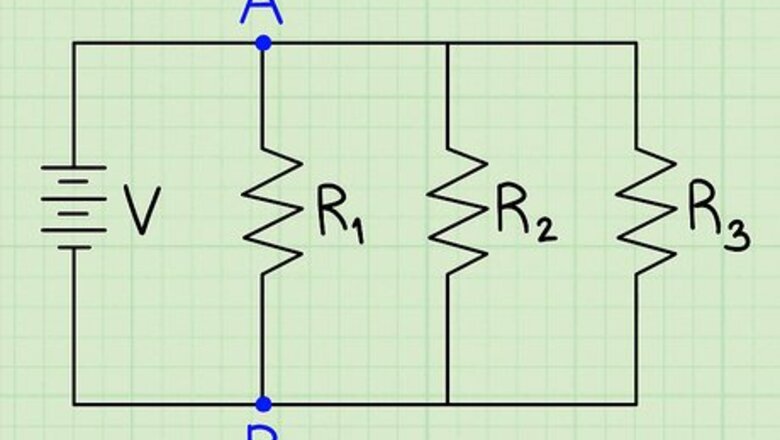
views
Introduction to Parallel Circuits
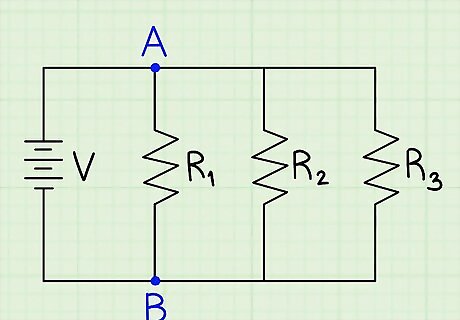
Identify parallel circuits. A parallel circuit has two or more branches that all lead from point A to point B. A single stream of electrons divides to flow through multiple branches, then merge back into one stream on the other side. Most problems involving parallel circuits will ask you to identify the total voltage, resistance, or current across the circuit (point A to point B). Components "connected in parallel" are each located on a separate branch.
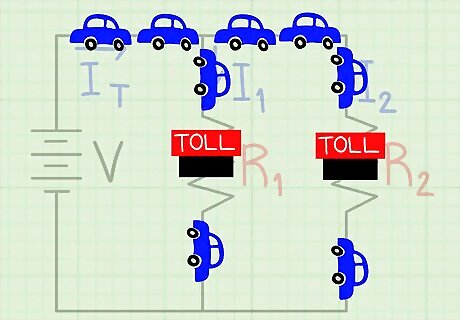
Understand current and resistance in parallel circuits. Imagine a freeway with multiple lanes, and toll booths in each lane slowing down traffic. Building a new lane gives the cars another path to take, so it will always speed up traffic even though you're adding a new toll booth as well. Similarly, adding a new branch to a parallel circuit gives current an additional path to take. No matter how much resistance that new branch has, the total resistance of the circuit will decrease, and total current of the circuit will increase.
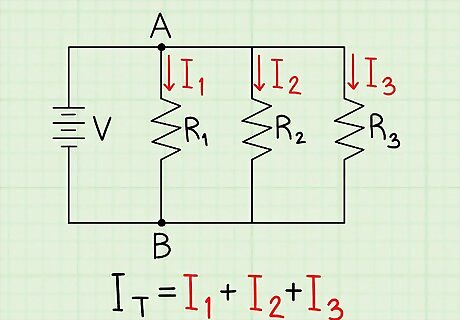
Sum currents in each branch to find total current. If you know the current in each branch, just add them together to find the total current. This is the amount of current flowing in the circuit after all the branches come together. In formulaic terms: IT = I1 + I2 + I3 + ...
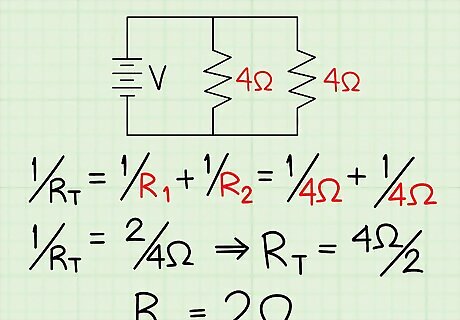
Solve for total resistance. To find total resistance RT across the circuit, solve for it in the equation /RT = /R1 + /R2 + /R3 + ... where each R on the right-hand side represents the resistance on one branch of the circuit. For example, a circuit has two resistors in parallel, each with 4Ω resistance. /RT = /4Ω + /4Ω → /RT = /2Ω → RT = 2Ω. In other words, two branches of equal resistance are exactly twice as easy to get through as one branch alone. If one branch has no resistance (0Ω), all the current goes through that branch. The total resistance is 0.
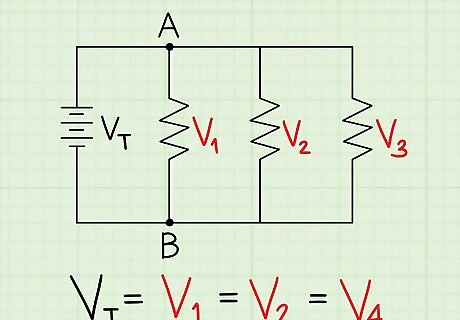
Remember what voltage describes. Voltage is the difference in electric potential between two points. Since you're comparing two points, not examining a path of movement, the voltage will remain the same no matter which branch you're looking at. VT = V1 = V2 = V3 = ...

Find missing values with Ohm's Law. Ohm's Law describes the relation between voltage V, current I, and resistance R: V = IR. If you know two of these values, use this formula to solve for the third. Make sure every value refers to the same portion of the circuit. You may use Ohm's Law to examine the total circuit (V = ITRT) or a single branch (V = I1R1).
Example Circuit
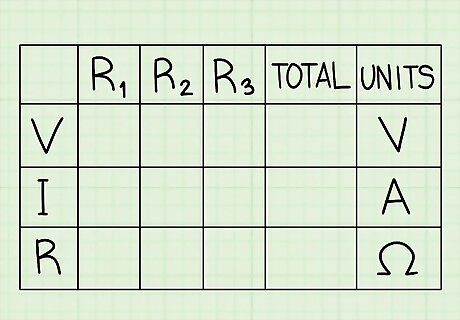
Make a chart to keep track of your work. If you have a parallel circuit with several unknown values, a chart will help you organize your information. Here's an example chart for a circuit with three parallel branches. Note that branches are often referred to as R followed by a subscript number. R1 R2 R3 Total Units V volts I amperes R ohms
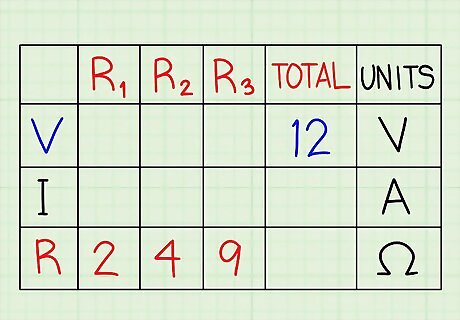
Fill in all the information given by the problem. For our example, we'll use a circuit powered by a 12 volt battery. The circuit has three parallel branches, with resistances 2Ω, 4Ω, and 9Ω. Add this information to your chart: R1 R2 R3 Total Units V 12 volts I amperes R 2 4 9 ohms
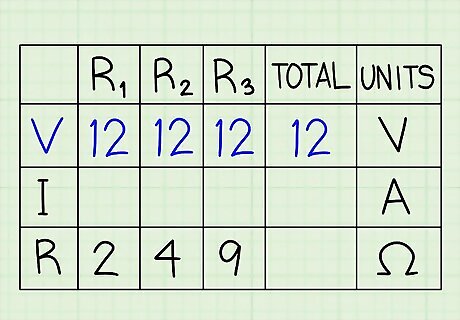
Copy the voltage value to each branch. Remember that the voltage across the whole circuit equals the voltage across each branch of a parallel circuit. R1 R2 R3 Total Units V 12 12 12 12 volts I amperes R 2 4 9 ohms
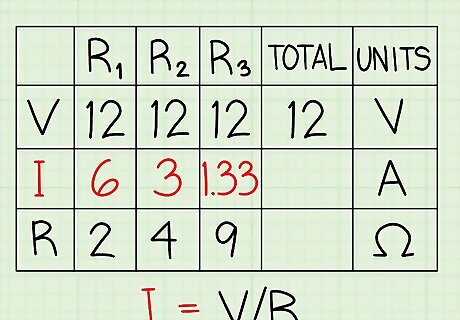
Use Ohm's Law to find the current in each branch. Each column in your chart includes voltage, current, and resistance. This means you can always solve for a missing value as long as you have the other two values in the same column. If you need a reminder, Ohm's Law is V = IR. The missing value is current in our example, so we can rearrange this as I = V/R. R1 R2 R3 Total Units V 12 12 12 12 volts I 12/2 = 6 12/4 = 3 12/9 = ~1.33 amperes R 2 4 9 ohms
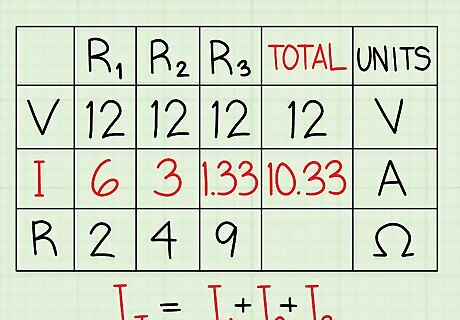
Solve for total current. This is an easy value to find, since the total current equals the sum of the currents in each branch. R1 R2 R3 Total Units V 12 12 12 12 volts I 6 3 1.33 6 + 3 + 1.33 = 10.33 amperes R 2 4 9 ohms
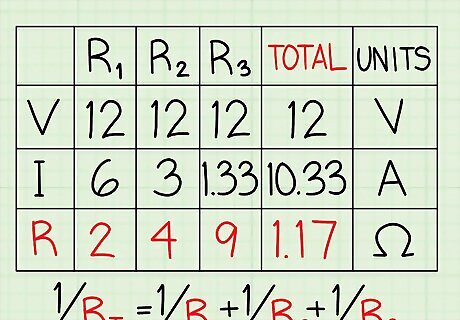
Solve for total resistance. You can find this in two different ways. You can use the resistance row to calculate it using the formula /RT = /R1 + /R2 + /R3. However, it's often easier to solve for it using Ohm's Law and the total V and I values. When solving for resistance, rearrange Ohm's Law as R = V/I R1 R2 R3 Total Units V 12 12 12 12 volts I 6 3 1.33 10.33 amperes R 2 4 9 12 / 10.33 = ~1.17 ohms
Additional Calculations
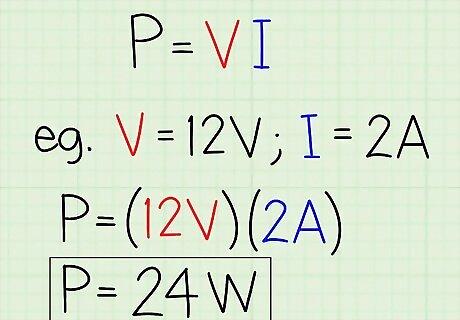
Calculate power. As in any circuit, power P = IV. If you've solved for power along each of the branches, the total power PT equals the sum of all branch power values (P1 + P2 + P3 + ...).
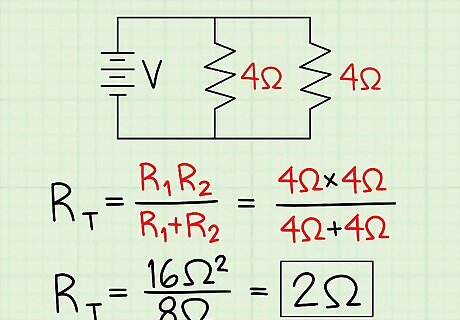
Find total resistance for a two-branch circuit. If there are exactly two resistors in parallel, you can simplify the equation to the "product over sum" equation: RT = R1R2 / (R1 + R2)

Find total resistance when all resistors are identical. If every resistor in parallel has the same resistance value, the equation becomes much simpler. RT = R1 / N, where N is the number of resistors. For example, two identical resistors in parallel provides ½ the total resistance of one resistor alone. Eight identical resistors provide ⅛ of the total resistance.
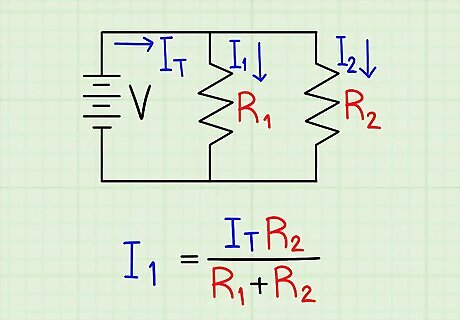
Calculate branch currents without voltage. This equation, called Kirchhoff's current divider rule, lets you solve for individual branch currents even if you don't know the circuit voltage. You'll need to know the resistance of each branch, and the total current f the circuit: Two resistors in parallel: I1 = ITR2 / (R1 + R2) More than two resistors in parallel: To solve for I1, find the combined resistance of all resistors besides R1. Remember to use the formula for resistors in parallel. Now use the equation about, replacing R2 with your answer.
















Comments
0 comment